Helloo again! We’ve returned today to continue our discussion of the DLT – Dreaded Love Triangle. Welcome back!
Last post, I examined what a DLT actually comprises, and had a brief look at their history in literature (or at least, looked at a few examples of DLTs in literature from multiple genres and eras).
I also brought up a number of reasons why DLTs frustrate the hell out of readers. In fact, some of those reasons were cited in this recent article (‘Shit I’m Sick of Reading’ by Kat Kennedy over at Cuddlebuggery – Kat, we feel your pain!) – so yes, DLTs still annoy the crap out of people.
But the fact remains that writers continue to employ DLTs in their work. In the immortal words of Julius Sumner Miller, Why is it so?
I thought it was worth giving a few reasons for why, exactly, writers still seem to be so enamoured (ha! See what I did there?) with this particular trope.
So here’s why!
* it SELLS: You want to know how I know it sells? Let me give you a round-up of recent top-selling YA titles, for a bit of perspective: The Selection…A Court of Thorns and Roses…Red Queen…The Iron King…Throne of Glass…Shadow and Bone…An Ember in the Ashes…Dumplin’…The Sin Eater’s Daughter…The Wrath and the Dawn…The Conspiracy of Us…The 100… And they all feature DLTs.
So yes, stories with DLTs still fly off the shelves. That’s a powerful incentive for publishers, who are (let’s face it) running a business, and it may impact on writers who want to get their books out there. It also makes me wonder who’s actually complaining about DLTs – is it just the reviewers who are sick of them? Because the reading audience doesn’t seem to be. Or are they ubiquitous in fiction, so the reader has no choice? Hmm – bit of a chicken-or-egg theory there…
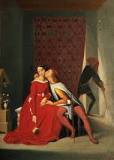 * it makes the story work good: Carrie Ryan (The Forest of Hands & Teeth) made a fantastic point in her own post about DLTs: “To me, a love triangle done right isn’t about a female character’s affections bouncing back and forth between two men, it’s about her internal struggle within herself as she figures out who she wants to be and what’s important to her. This internal struggle then gets reflected externally as she wars within herself and grows. And that’s the heart of any book — a character’s growth from first page to the last.”
* it makes the story work good: Carrie Ryan (The Forest of Hands & Teeth) made a fantastic point in her own post about DLTs: “To me, a love triangle done right isn’t about a female character’s affections bouncing back and forth between two men, it’s about her internal struggle within herself as she figures out who she wants to be and what’s important to her. This internal struggle then gets reflected externally as she wars within herself and grows. And that’s the heart of any book — a character’s growth from first page to the last.”
Also, characters in stories of all stripes are often best motivated by conflict. So if the character’s arc seems to demand a DLT, then far be it from me to suggest otherwise. Writers should write what’s good, what works, what makes the story move forward. Sometimes a DLT is what works best.
* it’s a fair representation of teenaged emotional angst: Growing up is hard. Being a teenager is hard. And one of the hardest things about it is figuring out the social and emotional mechanics of life and relationships. DLTs sometimes work well as good shorthand for this figuring-out process. As Kimberli in The Hub writes: “Portraying love triangles in YA novels is a good way to show how hard it is for teens to stay neutral and how they might have to make a list of pros and cons in order to make a decision”. Sounds legit.
* it’s realistic: sorry to break this to you, but people don’t often meet their OTP in high school, The End. In fact, it’s pretty normal now for people to have more than a few relationships – even long-term relationships – before settling down with one person (or not settling down with anybody). They might even (*gasp*) choose one person, then change their mind and choose another. I have an issue with the idea that love should only ever be written as an exclusive two-person relationship, mainly because it’s not always true. People can find themselves in situations where they’re attracted to more than one person at a time – it’s sticky, but it happens. It’s real life, and real life (like real love) is often complicated.
* it’s fantasy: this is the opposite side of the coin to the point just discussed. Okay, fiction is entertainment and y’know, not real, but you all knew that. Fiction is a place where things that don’t always happen in real life (like two incredibly hot suitors fighting over you) get to happen. And the readers of the story get to fantasize, just for a while, about what it might be like to be involved in that, what it might feel like emotionally, and the consequences of that. Sometimes people get caught up in the cliché-hate, because disparaging the tropes is considered a sign of good taste or something (romance literature suffers from this all the time). But fiction is a safe space for fantasy, and teenagers need that as much as anybody.
* it’s supposed to be about busting stereotypes: this is one of my biggest issues with DLTs. Many of the complaints about DLTs focus on a female MC’s wishy-washiness. Psychologist Eric Berne claimed that the conflictual aspects of the DLT – which he termed “Let’s You & Him Fight” – are “essentially feminine psychology” (on what basis? WHO THE HELL KNOWS). But I actually like the idea of female characters who get to choose – because it suggests that women’s choices and emotions are valid. For too long, this wasn’t the case, and I think it’s one of the reasons why Twilight’s romantic angst was so successful – putting aside the issue of creepy-stalker-Edward and hormonal-ragey-Jacob, Twilight was an opportunity for Bella to choose. For the first time, a girl got to choose, instead of waiting helplessly for some guy to choose her.
I’m still torn about this one, though, cos I think it’s been a bit hijacked. Another thing that Foz Meadows explained in her short but excellent post on DLTs is that “to boil entire narratives down to a binary equation” severely undermines any potentially feminist underpinnings of a book’s romantic storyline. She points out that championing a woman’s right to choose her partner is great, but when so much YA trumpets the same message (“And Lo! There shall be Two Hot Boys, one of them your Heart’s Intended, the other a vain Pretender who is also hot and with whom you shall have guilty makeouts before settling down with your One True Love”) what’s lost is alternative rights – the right to choose someone NOT a boy, for instance, or the right to not have a partner at all, to choose knowledge or art or travel or some other kind of personal vocation.
So I still think we could do more – a lot more – to reclaim this side of DLTs. And hey, you people who’ve suggested that we should see more of the ‘one guy/two girls’ version of the DLT – I find that irksome. Do we really need to revert to the portrayal of girls spatting over a big hunk of man-meat to make the trope ‘more interesting’? The idea of women fighting each other over a guy seems very 1950s, if you ask me (but then, maybe the ‘guys fighting over a girl’ model is equally Neanderthal – I think I know which I’d prefer, though).
In addition: for a very long time, women in literature were portrayed as simplistic creatures, with simple desires. But guess what? Women aren’t like that. Women can love as deeply and broadly and messily as they like. As Pam and Pearson explain: “Men and women love with equal passion as well as folly”. Women don’t always make ‘correct’ choices – and the focus of their passion may not always be narrow and clear-cut. We don’t always buy into the more socially acceptable idea that women are monogamous, and cleave to a single partner for life, whereas men are virile, and have license to ‘spread their seed’ (or whatever) more widely. Is it more ‘unnatural’ for a woman to have more than one soulmate/lover, or for a woman to find her OTP in high school and avoid any other interactions forever thereafter? To me, that latter idea could be just a version of the old ‘perfect virgin’ trope – and I think we might have moved beyond that now.
* love is complicated: love is so simple – and so freaking complicated that artists of every category have dealt with it in their work since time immemorial. Love is diverse. It may not always take the shape and form that we as a society try to squeeze it into. Love and sex are messy. People are always asking for a more accurate portrayal of ‘reality’ in YA – well, DLTs often fit with that. There isn’t always a clear decision, there isn’t always a mess-free way to resolve the situation – sometimes, there’s gonna be heartbreak and loss. It’s tough, but ‘reality’ can be tough. I’m gonna go with Pam/Pearson again here: “While love triangles can be accused of being clichéd, if done well, they provide insight into the complexity of love”.
Thus, the question remains – should writers use DLTs in their work?
Let me tell you a personal story. You know I wrote Every Move, right? In the finale of the Every series, we see Rachel Watts return to her hometown to figure out her personal traumatic shit and battle the Big Evil. Along the way she meets an old friend, Harris Derwent. Rachel isn’t attracted to Harris – I mean, she notices that he’s an attractive guy, because she’s not, y’know, blind – but Harris is compassionate and generous towards her when she’s at her lowest, and her opinion of him improves steadily during the course of the book (at first she thinks he’s a dirtbag). Harris, unfortunately, fancies Rachel – it kinda sucks to be Harris. He does try making a move on Rachel, but (spoiler alert – as if you needed one) she rebuffs him.
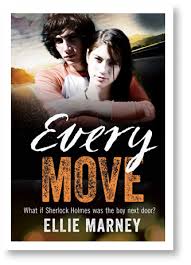 Now when I wrote Harris into the story, I wasn’t thinking ‘DLT’. I was thinking that Rachel was at a crossroads moment in her life – nearly eighteen, preparing to enter adulthood – and she was in a state of confusion about everything: her ability to cope with stress and pain, her relationship with her parents and friends, her relationship with her boyfriend, Mycroft (who was having some personal crises of his own). I wrote Harris in because he was a concrete representation of Rachel as she might have been if she’d stayed in Five Mile. Harris and Rachel share history: the same jokes and memories, the same local vernacular, the same understandings of life (Harris is basically Guy!Rachel). And Rachel has to confront that part of herself – the alternative path, the road not travelled, in all its attractiveness and nostalgia – before she can make a decision about which path she wants to choose.
Now when I wrote Harris into the story, I wasn’t thinking ‘DLT’. I was thinking that Rachel was at a crossroads moment in her life – nearly eighteen, preparing to enter adulthood – and she was in a state of confusion about everything: her ability to cope with stress and pain, her relationship with her parents and friends, her relationship with her boyfriend, Mycroft (who was having some personal crises of his own). I wrote Harris in because he was a concrete representation of Rachel as she might have been if she’d stayed in Five Mile. Harris and Rachel share history: the same jokes and memories, the same local vernacular, the same understandings of life (Harris is basically Guy!Rachel). And Rachel has to confront that part of herself – the alternative path, the road not travelled, in all its attractiveness and nostalgia – before she can make a decision about which path she wants to choose.
Carrie Ryan summed it up best (again): “each man is a viable choice for the heroine but each speaks to a different part of who she is. The heroine isn’t choosing between two men, she’s choosing who SHE wants to be and that will dictate who the right match is.”
So Harris seemed like a fine fine idea at the time I was writing Every Move. But wow, people took umbrage. Like, serious umbrage. Some readers said they couldn’t finish the book because the thought of Rachel even considering Harris over Mycroft made their poor hearts squirm. Some people warned readers away from the series, because they felt the ‘DLT’ ruined a perfectly good story.
I was shocked, I have to say. Because I didn’t think I’d written a DLT (and Wikipedia seems to agree with me – see the definition of “a former lover or friend returns…usually not considered a love triangle…in the end the [fusion_builder_container hundred_percent=”yes” overflow=”visible”][fusion_builder_row][fusion_builder_column type=”1_1″ background_position=”left top” background_color=”” border_size=”” border_color=”” border_style=”solid” spacing=”yes” background_image=”” background_repeat=”no-repeat” padding=”” margin_top=”0px” margin_bottom=”0px” class=”” id=”” animation_type=”” animation_speed=”0.3″ animation_direction=”left” hide_on_mobile=”no” center_content=”no” min_height=”none”][original] relationship remains intact with the long-term partner having learned some valuable lessons”). But omg the fury! Ouch. It also made me sad, that people might have been put off reading the books because of the ire of some reviewers.
To wit – I will think very carefully about using the DLT trope (even a whiff of it!) in any future books that I’d like to see succeed. Which is kinda crazy, if authors are self-censoring – and maybe throwing out a perfectly logical plot arc – because they fear the backlash over DLTs. I’m not the only author who’s acknowledged this – another author friend recently said she’s battening down the hatches because she wrote a DLT into her next book.
I’m sure some people are cheering – they’d be happy to never see another DLT in YA fiction again. But…well, I’ve already noted the points for and against. Sometimes you use DLTs for a reason. Only then you have to stand back and see your Ickle Baby Book get strafed in reviews, which hurts.
I think, sometimes, clichés work because people identify with them (for whatever reason). And if you read Joseph Campbell, then hell – everything has already been written, there’s no combination of plot elements that hasn’t been used up and turned into a cliché. But DLTs seem to be a special case. The rash of DLTs in YA fiction over the last few years seems to have poisoned the well for writers who would like to use it in their work. If you want to use a DLT in your book, think carefully and consider your options. Just sayin’.
Having said that, if you can find a compelling and original angle on it, and it makes the story work good, more power to you.
xxEllie
Want to read more about the issue? Try:
Carrie Ryan[/fusion_builder_column][/fusion_builder_row][/fusion_builder_container]

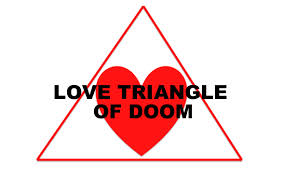
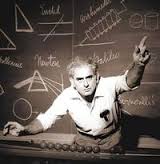
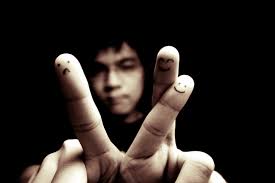
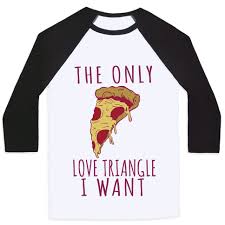
Fantastic piece, Ellie. And I wouldn’t for a moment say that Every Move had a DLT. It sounds to me as though some reviewers are jumping on a bandwagon and getting a bit foamy-at-the-mouth over something that isn’t there. For a love triangle there needs to be love (insta- or otherwise) for two possible suitors. Harris may have been crushing on Rachel – and let’s face it, who wouldn’t? – but that’s not the same thing as Rachel flip-flopping between wanting Mycroft – and let’s face it, who wouldn’t? – and wanting Harris. I would say Harris was more of an unrequited love arc, and as you say, a glimpse at what her life may have been if she’d stayed in Five Mile.
hmmm…
you know what? i guess every move wasn’t exactly DLT. I mean, I know from FOR SURE that Rachel wouldn’t even so much as glance at Harris romantically, so…..
I’m okay with it.
But I have a friend who likes Harris more than Mycroft, so…